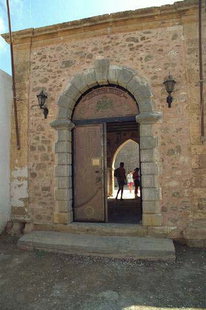
The entrance to Toplou Monastery
Throughout its long history, Toplou has withstood many attacks and occupations by invading forces. This is partly due to its strategic position. Solidly-built walls enclosed the monastery. Entry to the interior is through a massive, heavy door on the western wall. High above the door is the "murderer's hole". The monks or those who had found refuge inside poured boiling oil or water onto the heads of the attackers. There was also a cannon to protect the monastery, hence the name Toplou, Turkish for "with a cannon".
The monastery was a centre for revolutionary meetings and provided shelter for freedom fighters during the Greek revolution of 1821. As a reprisal, the Turks hung fourteen monks from the main gate.
During World War II, the monastery was again a place of resistance, this time against the German forces. The abbot, Gennadios Syllingakis, assisted in the installation of a wireless transmitter and from here messages were sent to Allied headquarters in the Middle East. An English officer hid in the monastery and operated the wireless. When the Germans learned of the activity here, they arrested the abbot and several monks and later executed them all.
In addition to its noteworthy history, Toplou is famous today for its icon by Ioannis Kornaros known as "Great Art Thou, O Lord". This depicts sixty-one scenes from the Orthodox liturgy and dates from 1770. Many other very interesting Byzantine icons are displayed in the monastery museum.
Photos of Toplou Monastery in Moni Toplou:
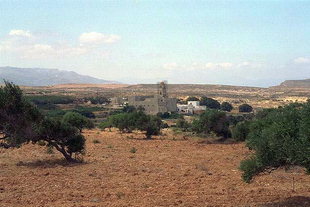
Toplou Monastery
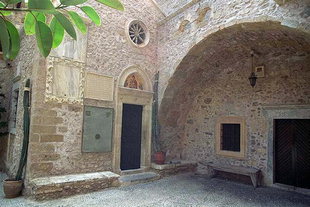
The (2C B.C.) inscription in the Toplou Monastery
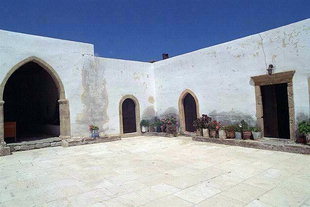
The inner court yard of Toplou Monastery
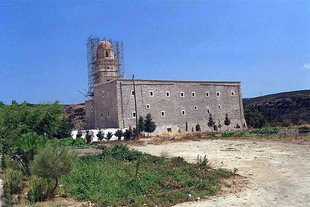
Toplou Monastery
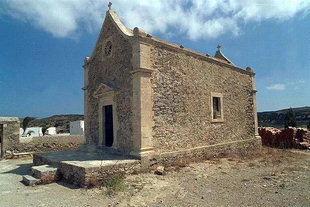
The Venetian church Timios Stavros, Moni Toplou

The cloister of the Toplou Monastery
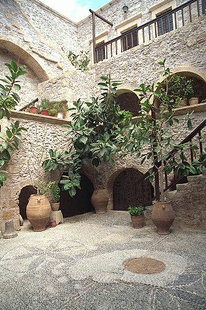
The cloister area of Toplou Monastery

The entrance to Toplou Monastery
Visit the area of the sight: Toplou Monastery
| < Prev | Next > |
|---|







